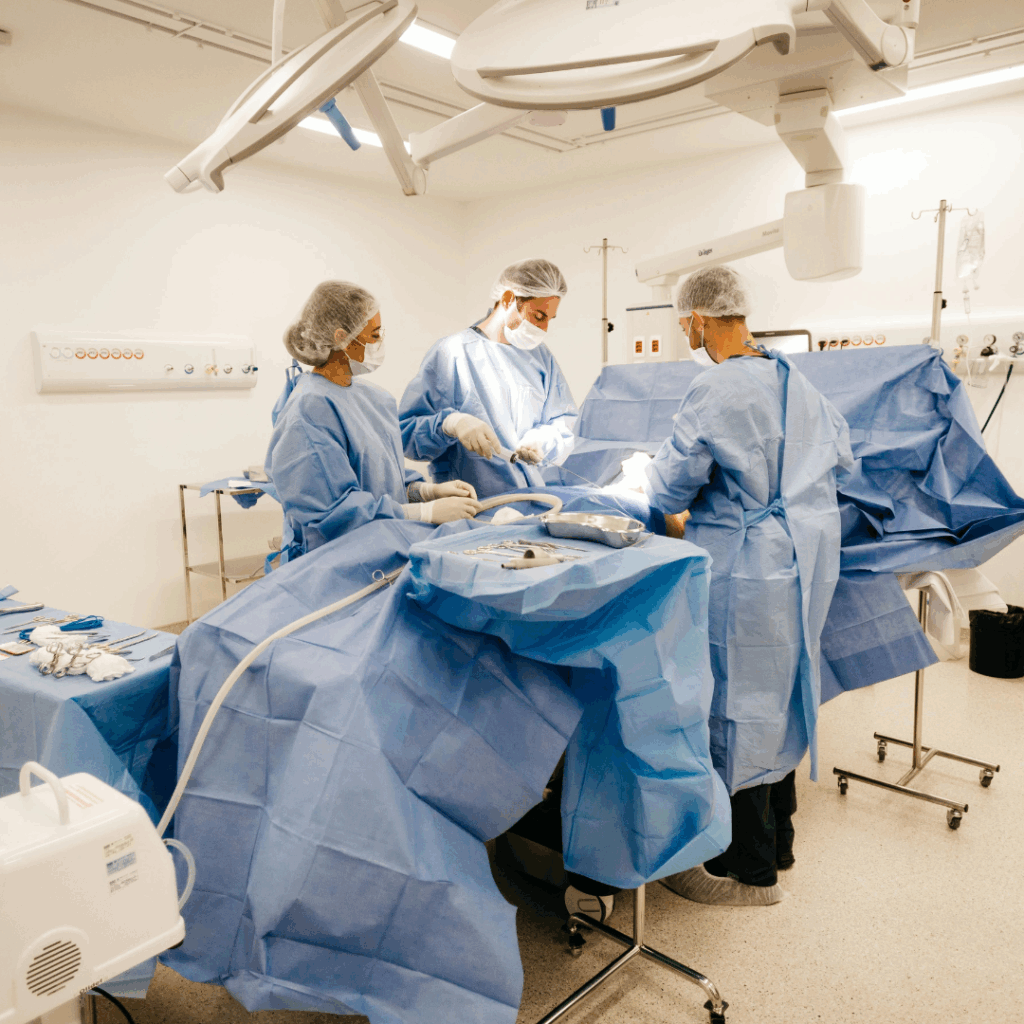Out of the most damaging orthopedic injuries, hip fractures are the ones that put a person’s life in danger in a very short time. Surgical treatment is necessary to restore the mobility of the patient and prevent the transformation of hip fractures into permanent disabilities. Generally most patients have a good recovery after orthopedic surgery for hip fractures; however, some of them have problems and need a second surgery called revision hip fracture surgery.
On the technological side, a second surgery is more complicated than the first one but, it has such a crucial role in giving back the function, lowering the pain, and supporting patients’ emotional wellbeing. The present writing goes deep into surgical intervention in the case of revision of hip fracture, reasons for the same, the modality of the surgical procedure, and the patient’s experience during the recover process.
What Is Revision Hip Fracture Surgery?

Revision hip fracture surgery is a technology that helps a doctor to reoperate as a correction method any surgery that has failed to achieve the desired outcomes. In contrast to the first surgery, which focuses on repairing the damaged bone or replacing it, the revision type of surgery program, such as complication secondary to a failure of the implant, infection, insufficient bone healing, or pain, are the matters dealt with in surgical intervention.
Due to the greater technical complexities of revision surgeries, they are more suitably performed by orthopedic specialists who have vast experience. Dr. Akshay Shetty, a Sports Injury & Joint Replacement Specialist in Bangalore who has extensive experience in both primary and revision hip surgeries and is known for achieving the best possible results for his patients.
When Would You Consider Revision Hip Fracture Surgery?
Not every patient who has a hip fracture surgery may require revision; however, there are some instances where complications occur and thus warrant a second surgery. Common indications include:
Implant Failure
The plates, screws, or rods that are used to stabilize the fracture may become a little loose, break down, or shift out of position, particularly if the bone is not healing as it should.
Nonunion or Malunion
If the fracture is a nonunion, patients may still undergo pain, limping, and the inability of the limb to be used. On the other hand, if the fracture heals at the wrong place or in the wrong way (malunion), the patients may suffer the same symptoms as above.
Infection
On the other hand, infections that are at or around the place of surgery or the implants may also be a cause for the healing process not to continue. In this situation, taking off the infected implant, cleaning the area, and refixating the bone will be the steps involved in revision.
Avascular Necrosis (AVN)
The blood supply to the hip joint, as a result of the fracture, is sometimes interrupted and the bone tissue starts dying.
AVN would often require a revision in conjunction with hip replacement.
Persistent Pain or Reduced Function
In case of significant post-operative pain or reduced function experienced by a patient following the primary treatment, the option of revision will be considered.
Types of Revision Hip Fracture Surgery

The type of revision procedure undertaken will depend on the original operation performed and the complication being corrected. The common modes include:
Revision Internal Fixation
If the implants fail or the fracture has not healed correctly, the surgeon may remove the old implants and re-stabilize the fracture with stronger or different fixation devices.
Conversion to Hip Replacement
In cases of severe damage, avascular necrosis, or arthritis after a hip fracture, the surgeon may perform a total hip replacement (THR) or hemiarthroplasty (partial replacement).
Infection Management Surgery
For deep infections, revision may involve removing the implant, treating the infection with antibiotics, and later placing new fixation devices or a prosthetic joint.
Bone Grafting
In cases where loss of bone substance has been significant, grafts may be utilized to encourage healing and restore structural stability.
What Happens During Revision Hip Fracture Surgery?
The actual revision procedure is very likely to be much more complicated than that of the primary surgery because, in addition to being in an already dissected area, the surgeon has to contend with scar tissue, weak bone, and sometimes damaged implants. The basic steps are as follows:
Preoperative Assessment
Imaging tests will include X-rays, CT, or MRI to ascertain the cause of failure. Blood tests will often be performed to check for signs of infection.
Removal of Failed Implant
The surgeon will remove the broken or loosened implants with the utmost care to prevent any further damage to the bone.
Reconstruction or Replacement
Based on the details of the issue, the doctor surgically implants the bone with new equipment, changes the hip joint with an artificial one, or uses a bone graft for additional support.
Closure and Rehabilitation Plan
Upon successful completion of the revision, the wound is closed, followed by the delineation of a rehabilitation regime aimed at safely enabling the patient to regain mobility.
Recovery After Revision Hip Fracture Surgery
Usually recovery continues longer after a revision than it does after the primary surgery; however, with appropriate care most patients are able to become mobile and comfortable. Following are the major features:
- Hospital Stay: A 4-7 day hospital admission for observation is standard to monitor for any complications and carry out initial treatment with physiotherapy.
2. Pain Management: Along with the use of medication and cold therapy, other post-operative pain control measures will be implemented.
3. Physiotherapy: The exercises that are prescribed by the physiotherapists are the only source of great strength, balance improvement, and function regaining.
4. Weight-bearing Restrictions: The patients who have undergone a particular kind of surgery will be probably asked not to put full weight on the operated part for several weeks.
5. Lifestyle Modifications: Walking with the help of aids, not engaging in high-impact activities, and eating a balanced diet that contains enough calcium and vitamin D are the main sources of long-term recovery.
Risks and Complications
There are, of course, complications that accompany any surgery, and thus revision hip fracture surgery is no different:
- Infection recurrence
2. Blood clots
3. Loosening of the implant
4. Injury to nerves
5.Slower healing
Risk reductions through choice of a well-experienced orthopedic surgeon increase the chance of an excellent outcome.
Prevention of Revision Surgery
Although some revisions are unavoidable, patients can prevent the risk of a revision by taking some actions as follows:
- Strictly adhering to the post-operative directions given
- Ensuring that all follow-up appointments are kept
- Completing physiotherapy and exercise programs as advised
- Exercising to keep the body weight within a healthy range
- Taking good care of medical conditions like osteoporosis, diabetes, or arthritis
Why Select Dr. Akshay Shetty for Hip Fracture Surgery in Bangalore?
In a complicated situation such as revision hip fracture surgery, the doctor’s experience, and accuracy are the two factors that weigh most. Dr. Akshay Shetty, a well-known Sports Injury & Joint Replacement Specialist in HSR Layout, Bangalore, has achieved good results with not only primary but also with revision hip surgeries through his surgical interventions.
His surgical skillfulness, use of high-tech instruments, and customized physiotherapy ensure the patient’s recovery to be quicker and that the progression of the recuperation to be better beyond their expectations.
Conclusion
Most of the times, revision hip fracture surgery is the way to movement revival and pain alleviation when the first one has not resulted in the desired way. Though more difficult than primary surgery, if professionally taken care of and the right set of exercises are followed, patients can get back to their active daily routines.
If someone of your family and friends has had a first hip fracture surgery and now is in a bad condition, I would strongly advise you to make an appointment with Dr. Akshay Shetty in Bangalore. It is a step that can change everything for the better.

Leave a Reply